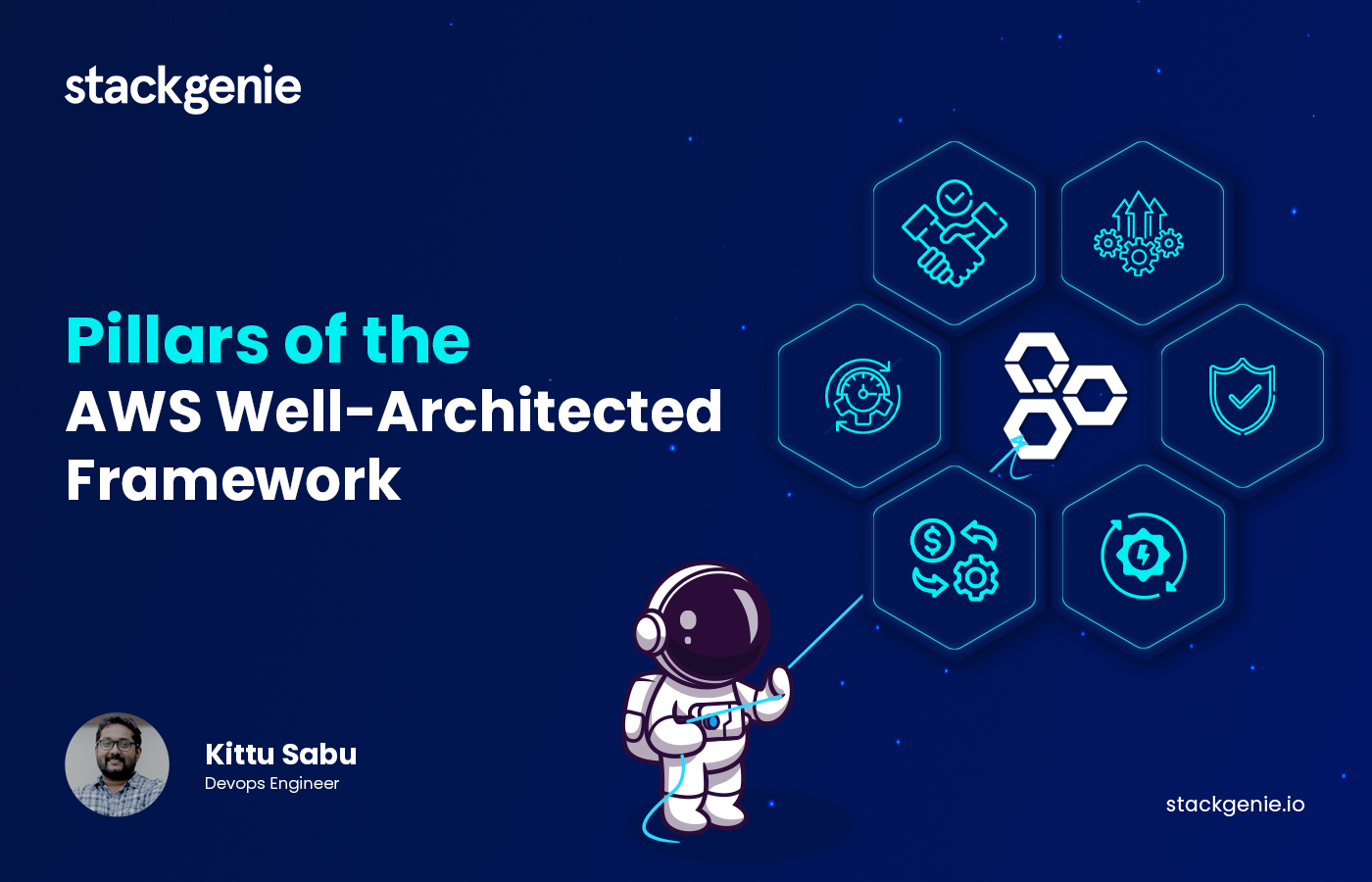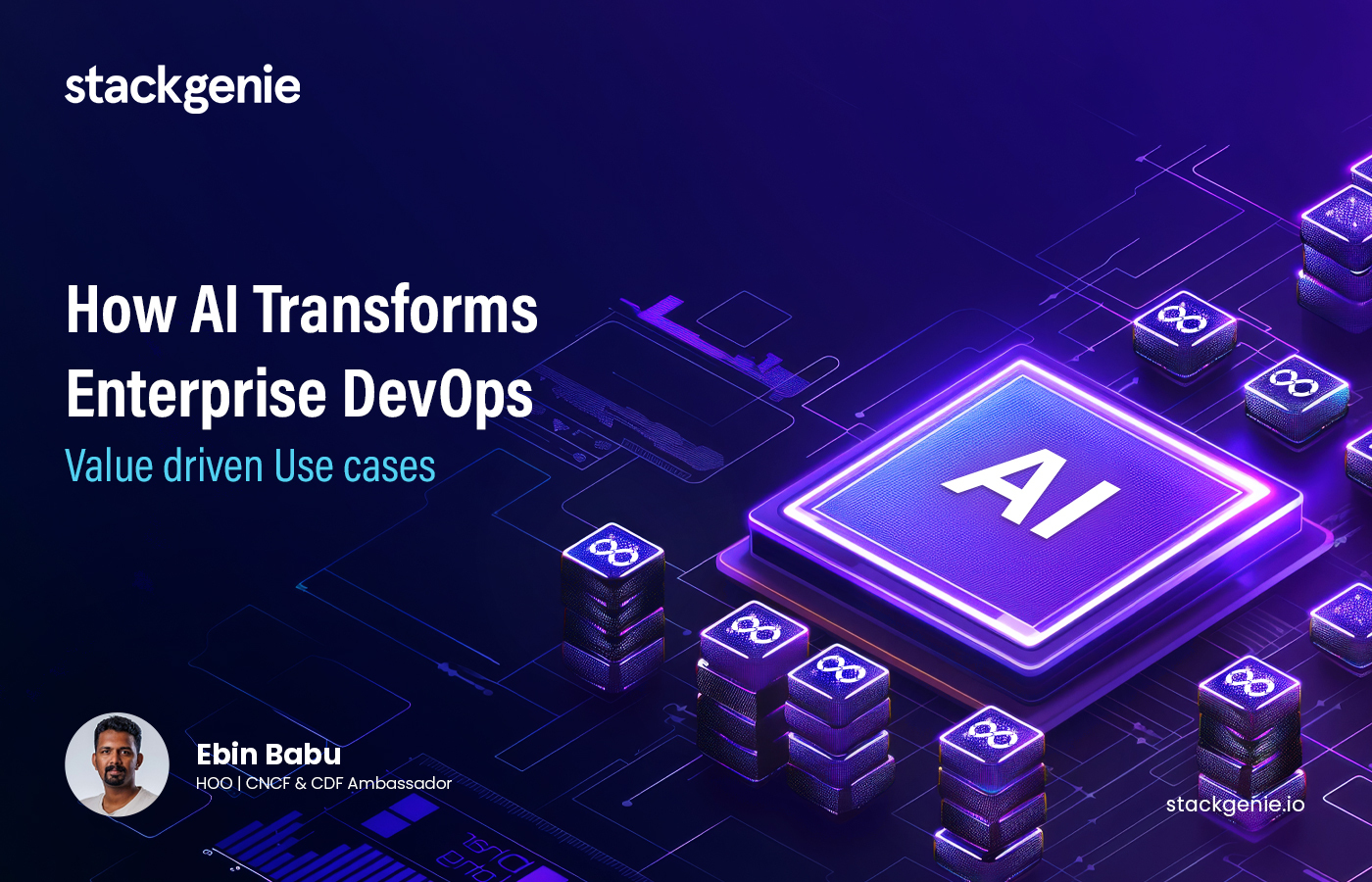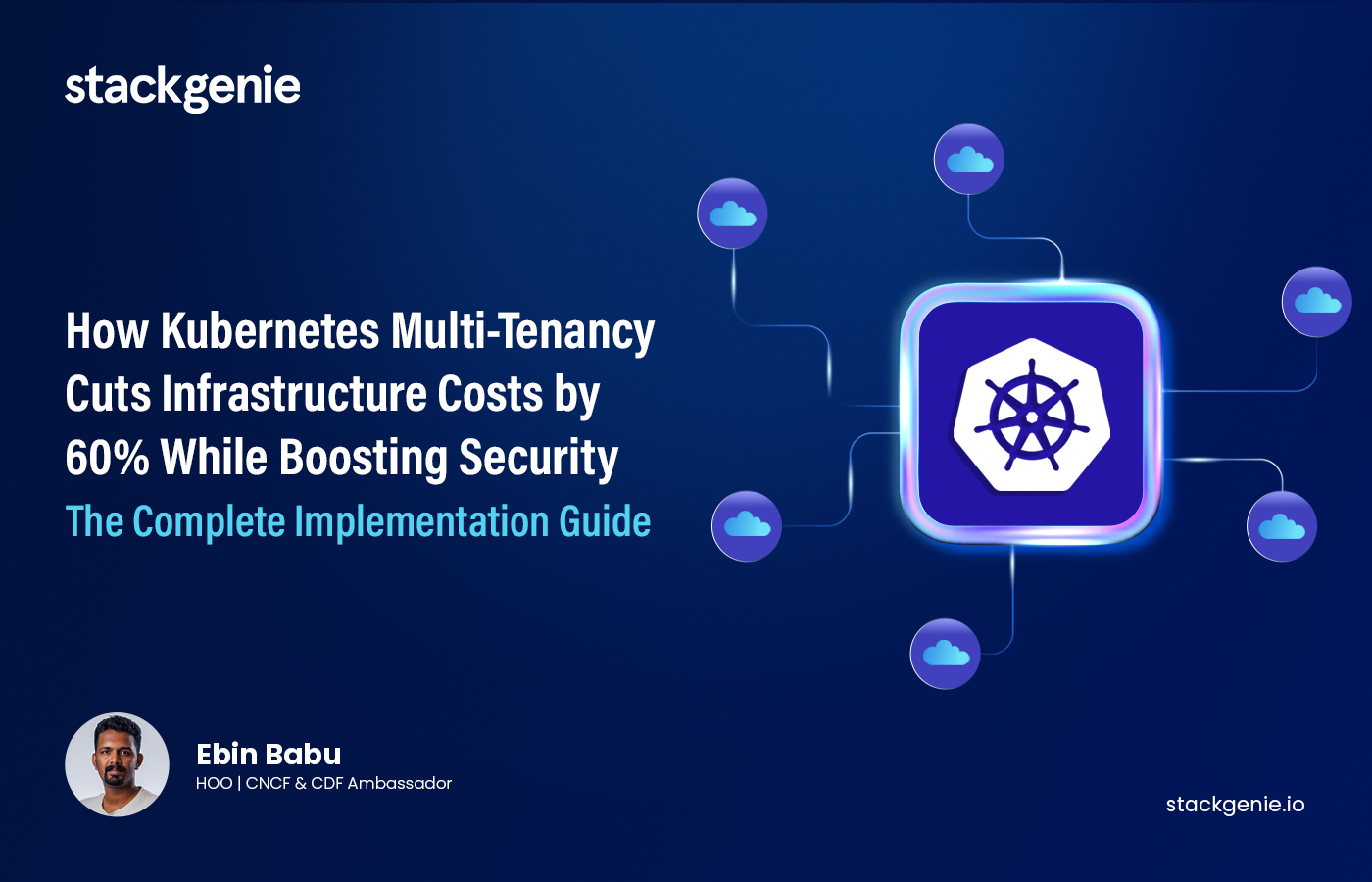Inside this article :
6 Pillars of the AWS Well-Architected Framework
Cloud business infrastructure has become indispensable for businesses to build and scale digital products like applications and websites. To ensure these systems operate efficiently and securely, Amazon web services (AWS) offer a robust AWS well-architected framework so that you can move workloads to the cloud.
This framework provides businesses with actionable guidelines for designing and optimizing cloud architectures, ensuring scalable, reliable, and cost-efficient digital systems. The six core principles help you focus on other aspects, such as functional and financial requirements.
In this blog, we will discuss the 6 pillars of the AWS well-architected framework—operational excellence, security, reliability, performance efficiency, cost optimization, and sustainability. We will also explore how these pillars help build a resilient cloud system.
So, let’s get started.
Understanding AWS Well- architectured Framework
The AWS well-architected framework is a set of comprehensive guidelines for CTOs, CEOs, developers, and digital product managers. It serves as a blueprint for helping organizations identify and implement architectural best practices for their cloud environments.
At its core, the framework is built on “6 pillars” to support a solid and dependable cloud system. It includes operational excellence, security, reliability, performance efficiency, cost optimization, and sustainability.
6 Pillars of the AWS Architected Framework
Businesses must understand how to use these pillars for effective cloud optimization to help eliminate user downtime and dissatisfaction.
1. Operational Excellence
Operational excellence focuses on building software systems that consistently deliver high-quality digital experience. It ensures that your operational processes consistently deliver reliable, optimized cloud systems that meet the changing efficiency demands.
It is not just about meeting immediate needs but also about projecting a foundation for your digital product that can evolve and adapt over time. The AWS well-architected framework pillar provides businesses with a roadmap for organizing teams effectively, designing scalable workloads, and continuously improving their operations.
Organizations can build cloud systems that deliver maximum business value while maintaining performance and reliability, even during peak marketing time. For example, an e-commerce website spikes sales growth during seasonal events.
The site could slow down or crash without proper operational practices, leading to customer dissatisfaction and business downtime. However, with operational excellence in place, automated scaling adds server resources to handle increased traffic effortlessly.
Here are key aspects of Operational Excellence in practice:
- Infrastructure as Code (IaC): Use AWS tools like CloudFormation to consistently manage your business infrastructure through code and simplify deployment practices.
- Cloud Cost Optimization: Use Amazon Cost Explorer to identify areas of cloud cost optimization using features like Reserved Instances or Spot Instances.
- Automated Deployments: Use AWS CodePipeline to process updates and feature rollouts to minimize downtime and reduce manual work.
- Consistent Monitoring: Use AWS services like Amazon CloudWatch to monitor and address performance issues before they affect users, ensuring reliability.
- Incident Response: Establish well-documented incident response plans to handle security breaches or system breakdowns. Use tools like AWS Systems Manager.
- Continuous Improvement: Using data-driven techniques like A/B testing for informed decisions by regularly refining processes and systems to enhance efficiency.
Best Practices for Operational Excellence in Cloud Applications
- Align teams to specific workloads or business goals, dedicating ownership and accountability.
- Implement change management workflows to reduce the risk of unexpected issues.
- Develop detailed guides for standard operating procedures and incident resolution.
- Conduct post-incident reviews to identify root causes and prevent recurrence.
- Build a culture where teams collaborate on security, reliability, and operational tasks.
The Operational Excellence pillar ensures day-to-day efficiency and empowers businesses to adapt and scale effortlessly, delivering a consistently great user experience.
2. Security
Security in the AWS well-architected framework refers to measures such as data encryption, identity management, and threat analysis. It ensures enterprises have a secure and well-orchestrated cloud environment.
The security pillar assists you in implementing the best design principles, practices, and questions to take advantage of cloud technologies and improve security. For example, a financial services company can establish access control using AWS Identity and Access Management (IAM).
It can also use AWS CloudTrail for comprehensive auditing, AWS GuardDuty for threat detection, and AWS Key Management Service (KMS) for encryption key management.
This AWS well-architected framework pillar helps you put on effective strategies to:
- Protect Data Encryption: AWS Key Management Services (KMS) provides powerful features to safeguard data at rest (stored) and in transit (moving). The data is protected and not harmed even if intercepted because it is unreadable without the proper keys.
- Access Management: Implement fine-grained access controls like role-based access control to ensure only authorized personnel can access specific cloud resources. Use AWS services like AWS Identity and Access Management (IAM).
- Enable Traceability: Monitor and audit all changes in your system. Use AWS GuardDuty to trace abnormalities.
- Continuous Monitoring: Use AWS Security Hub to detect suspicious activity in any layer of the network system.
Best Practices for Security in Cloud Environments
- Monitor and log every action within your environment. Use tools like AWS Config and CloudTrail to maintain full visibility of changes.
- Automate compliance and vulnerability assessments using AWS Config rules and Inspector.
- Strengthen identity security with MFA (Multi-factor Authentication) for both users and systems.
- Regularly patch operating systems and applications to fix vulnerabilities. Use AWS Systems Manager to automate this process.
- Use Amazon VPCs (Virtual Private Clouds) to isolate workloads and minimize the impact of potential breaches.
The security pillar goes beyond simply protecting data. It eliminates risks and establishes a security culture throughout your organization.
3. Reliability
Reliability in the AWS well-architected framework focuses on ensuring that your systems are fault-tolerant and perform as expected. It helps you meet infrastructure workload demands, minimize downtime, and service-level agreements (SLAs) to maintain user satisfaction.
This well-architected AWS framework pillar helps businesses design impenetrable, robust digital systems capable of mitigating misconfigurations or transient network issues. For example, Airbnb uses AWS Auto Scaling to dynamically adjust the number of EC2 instances to handle traffic surges. Once demand decreases, resources scale down to optimize costs.
The key aspects of the reliability pillar include:
- Automatic Failure Recovery: Design systems to follow a self-healing mechanism to detect and recover from failures automatically. Use AWS Auto Scaling to detect and address failures.
- Setting Robust Foundation: Fulfill foundational requirements by using Amazon Route 53 for network domain management, Amazon Virtual Private Cloud (VPC) for networking, and AWS Identity and Access Management (IAM) for security.
- Redundancy and Fault Tolerance Checks: Design systems with backup components using services like Elastic Load Balancing to distribute traffic across healthy instances. Use Amazon RDS (Relational Database Service) Multi-AZ deployments to establish data availability during outages.
- Managing Change with Automation: Automate system changes to minimize human errors and improve reliability.
Best Practices to Enhance Reliability in Cloud Architecture
- Embrace Redundancy and Fault Tolerance: Use multiple Availability Zones and Regions to design fault-tolerant digital architectures with redundant components. It ensures uninterrupted operations even if one zone faces issues.
- Implement Incident Recovery: Develop robust disaster recovery strategies, including data backups with Amazon S3 with versioning enabled, to quickly recover from system outages and automate AWS backup.
- Continuous Testing: Regularly simulate failures and practice disaster recovery drills to ensure systems can recover effectively.
Reliability is like having a resilient safety net for your cloud systems, ensuring uninterrupted services and minimizing the impact of regional failures.
4. Performance Efficiency
Performance efficiency in the AWS Well-Architected Framework helps businesses effectively use their computing resources so that the business is always on and engaged. It ensures that your systems are adaptable, scalable, and capable of handling fluctuating workloads.
This AWS well-architected framework pillar helps businesses deliver smooth-running applications and a reliable digital experience while avoiding unnecessary resource utilization. For example, Netflix uses AWS Amazon CloudFront to deliver high-quality video content to users globally.
The key aspects of the performance efficiency pillar:
- Choosing Optimal Resources: Choose the most suitable instance types, storage options, and services for your workload requirements. AWS offers a variety of services, like Amazon EC2 and Lambda, for a tailored performance experience.
- Elasticity and Scalability: Use AWS Auto Scaling and Elastic Load Balancing to ensure resources dynamically adjust to meet changing traffic demands.
- Monitoring and Benchmarking: Use AWS CloudWatch and AWS X-Ray to analyze system performance, identify bottlenecks, and ensure that your applications perform at peak efficiency.
- Global Reach Optimization: Deploy AWS services like Amazon CloudFront to cache content closer to users, reducing latency and improving load times for global users.
- Experimenting with Innovation: Continuously modify your digital architecture by testing new technologies, configurations, or plugins.
Best Practices to Enhance Performance Efficiency in Cloud Applications
- Use AWS Lambda to eliminate the need to manage servers while maintaining flexibility and scalability. This approach reduces costs and increases performance.
- Choose purpose-built databases such as Amazon DynamoDB for high-throughput applications or Amazon Aurora for transactional workloads.
- Use Amazon ElastiCache to store frequently accessed data in memory, reducing database load and speeding up application performance.
- Process data closer to the source by using AWS services like AWS IoT Greengrass, enhancing responsiveness for latency-sensitive applications.
Performance efficiency is all about using the right resources at the right time. It helps you maximize the value of your cloud infrastructure that can withstand any uncertainty.
5. Cost Optimization
Cost Optimization in the AWS well-architected framework is about managing cloud costs effectively to get the most out of your cloud spending and manage system durability. This pillar encourages businesses to maximize the value of their investments in cloud services.
AWS provides various tools and strategies to help businesses avoid unnecessary costs, optimize resource utilization, and take advantage of pricing models that align with their workload demands. For example, you can use AWS Cost Explorer to analyze spending patterns and identify areas for improvement.
The key aspects of the cost optimization pillar include:
- Right-Sizing Resources: Identify underutilized or over-provisioned resources and adjust their capacity to match actual workload requirements. Use AWS Compute Optimizer to analyze and recommend optimal resource configurations.
- Optimize Data Transfers: Use AWS Direct Connect or Amazon CloudFront to minimize data transfer costs.
- Utilize Pricing Models: Take advantage of flexible pricing options on Reserved Instances, Spot Instances, or Savings Plans.
- Optimize Storage Costs: Choose appropriate storage tiers for your data. Move infrequently accessed data to Amazon S3 Glacier or S3 Intelligent-Tiering to reduce storage costs while retaining accessibility.
- Eliminating Waste: Identify and eliminate unused or underutilized resources, such as idle EC2 instances or obsolete snapshots.
- Automation: Use tools like AWS Instance Scheduler to automate cost management practices, such as shutting down non-essential instances during off-peak hours.
Best Practices for Cost Optimization in Cloud Applications
- Regularly monitor and analyze spending to identify trends and optimize budgets.
- Categorize resources by tags to track usage and allocate costs more effectively.
- Use AWS Budgets to set spending limits and receive alerts when thresholds are approached.
- For organizations with multiple AWS accounts, consolidate billing to maximize discounts through shared usage.
- Optimize storage by using lifecycle policies with Amazon S3 to transition data to lower-cost tiers as it ages.
Businesses can achieve significant savings without compromising performance by using the right AWS tools and strategies, making this pillar a critical component of the AWS well-architected framework.
5. Sustainability
Sustainability in the AWS Well-Architected Framework focuses on reducing the environmental impact while keeping your cloud systems efficient. It encourages businesses to value energy-saving practices, optimize resource utilization, and remember AWS’s commitment to achieving 100% renewable energy.
AWS empowers organizations to build greener digital architectures by providing tools and services that align with sustainable practices. For example, AWS enables users to track and reduce their carbon footprint through tools like the AWS Customer Carbon Footprint Tool.
The key aspects of the sustainability pillar include:
- Energy Efficiency: Use energy-efficient compute instances like AWS Graviton processors, which consume less power while delivering high performance.
- Resource Optimization: Optimize storage and computing resources to minimize waste by utilizing Amazon S3 Intelligent-Tiering and EC2 Auto Scaling services.
- Carbon Reduction Goals: Use AWS’s commitment to renewable energy to reduce your organization’s environmental impact.
- Sustainable Architecture Design: Adopt serverless solutions like AWS Lambda to reduce energy consumption.
- Data Center Sustainability: AWS utilizes cooling systems and other technologies to reduce energy usage.
Best Practices for Enhancing Sustainability in Cloud Operations
- Use right-sizing tools like AWS Compute Optimizer to ensure resources match workload needs, reducing unnecessary consumption.
- Select AWS regions powered by renewable energy sources for your workloads.
- Implement serverless technologies like AWS Lambda and DynamoDB to minimize the physical hardware required, reducing energy consumption.
- Use the AWS Customer Carbon Footprint Tool to monitor and reduce your carbon emissions.
- Adopt Amazon S3 Intelligent Tiering to automatically move data to the most cost-effective storage tier.
Sustainability in cloud architecture is about building systems that meet your business needs while preserving the planet’s resources. By incorporating sustainable practices into your cloud operations, you can create a positive environmental impact and reduce costs.
Best Practices of AWS Well-Architected Framework
The AWS Well-Architected Framework serves as a powerful tool for building secure, reliable, and efficient cloud architectures.
AWS Well-Architected Framework Pillars for Cloud Success
- Operational Excellence: Build processes that support continuous improvement. Use Infrastructure as Code (IaC) to standardize deployments and automate workflows.
- Security: Protect your workloads by enforcing the principle of least privilege using AWS IAM. Encrypt data at rest and in transit with AWS KMS.
- Reliability: Design fault-tolerant systems by steering multiple Availability Zones or Regions.
- Performance Efficiency: Right-size your resources to meet workload demands. Use tools like AWS Compute Optimizer to make informed decisions about instance types.
- Cost Optimization: Choose energy-efficient regions powered by renewable energy, and optimize workloads to reduce energy consumption.
Above all, reduce environmental impact by implementing energy-efficient practices and leveraging AWS’s renewable energy initiatives.
Leveraging the AWS well-architected framework Pillars for Cloud Success
The AWS Well-Architected Framework not only provides actionable guidelines for building robust infrastructure development but also helps businesses stay ahead of cloud challenges. Aligning your cloud strategy with this framework helps you ensure your workloads are secure, efficient, and scalable, setting a strong foundation of digital business architecture.
At Stackgenie, we specialize in helping businesses implement the best cloud optimization resources. Whether you are building a new cloud environment or improving existing workloads, Stackgenie’s managed cloud services can guide you every step of the way.
Transform your cloud strategy with Stackgenie and unlock the full potential of the AWS platform. Visit our website or contact us today to learn how we can empower your cloud success.
FAQs
1. What is the purpose of a Well-Architected review?
It helps identify gaps, optimize workloads, and implement best practices for a secure and efficient cloud environment.
2. Can small businesses benefit from the AWS Well-Architected framework?
Yes, it provides scalable best practices suitable for businesses of all sizes to improve performance and cost-efficiency.
3. What AWS tools help achieve reliability?
Tools like AWS Auto Scaling, Elastic Load Balancing, Amazon RDS Multi-AZ, and Amazon CloudWatch enhance reliability.
4. What steps can businesses take to improve cloud security using AWS?
Use IAM for access control, enable data encryption with AWS KMS, monitor with AWS CloudTrail, and detect threats with AWS GuardDuty.
5. How can the AWS Well-Architected framework improve my cloud strategy?
It aligns workloads with best practices, enhances scalability, and optimizes costs while ensuring security and performance.


